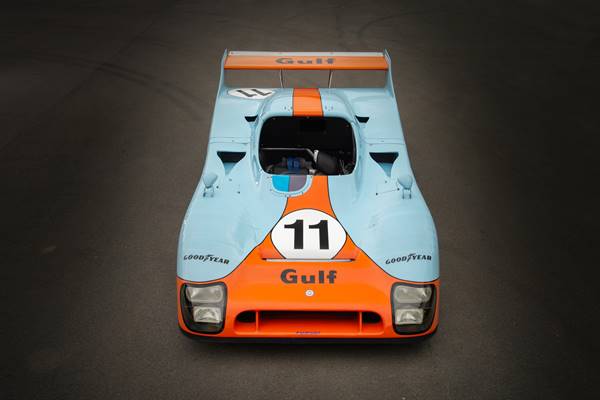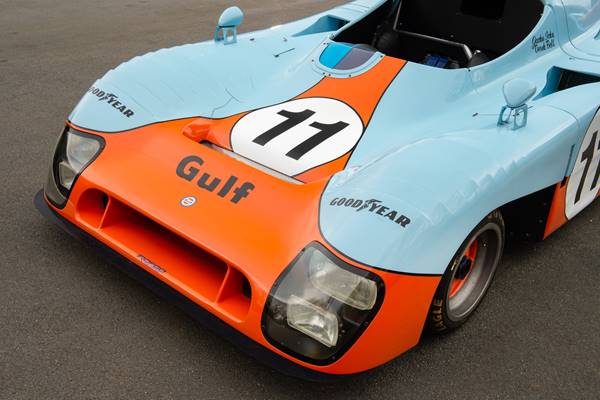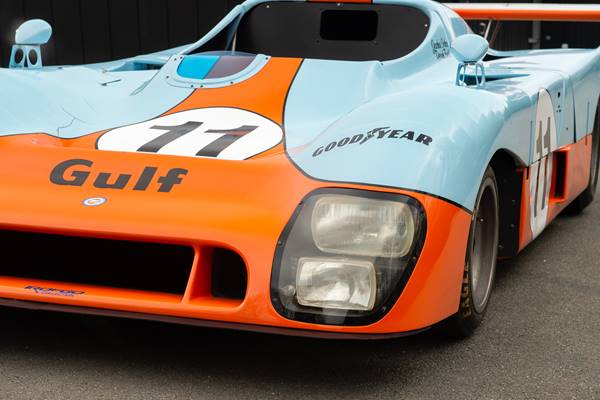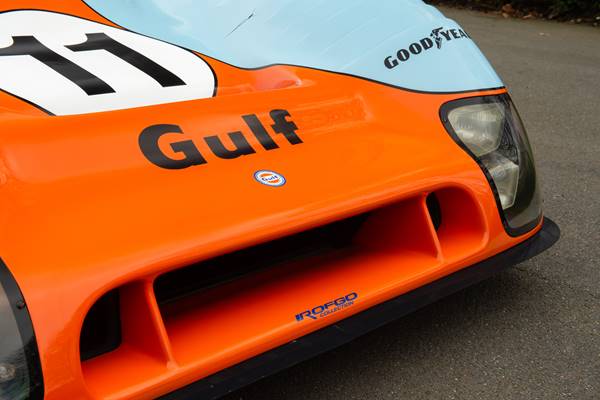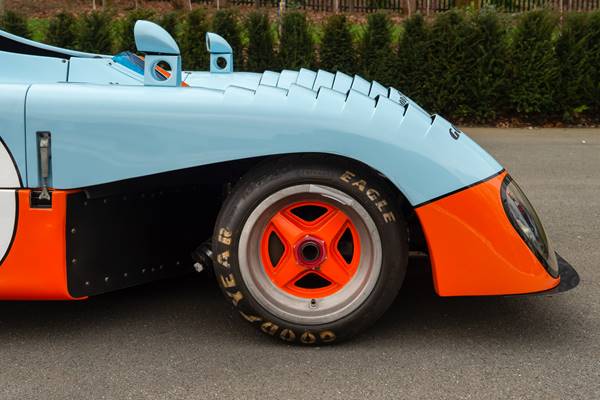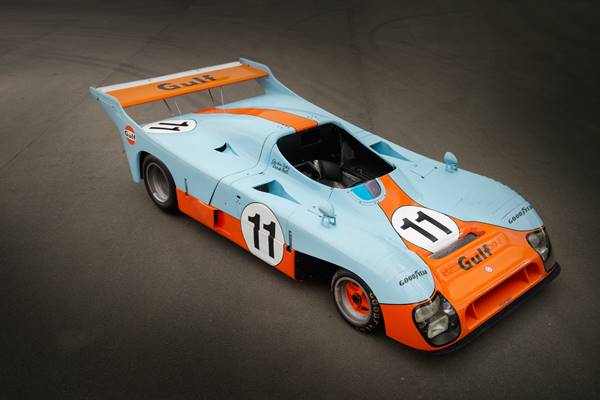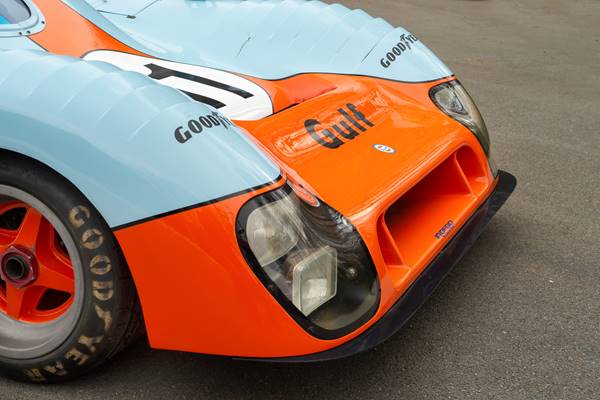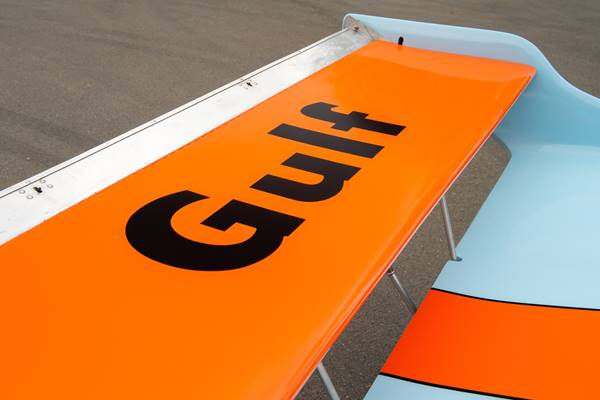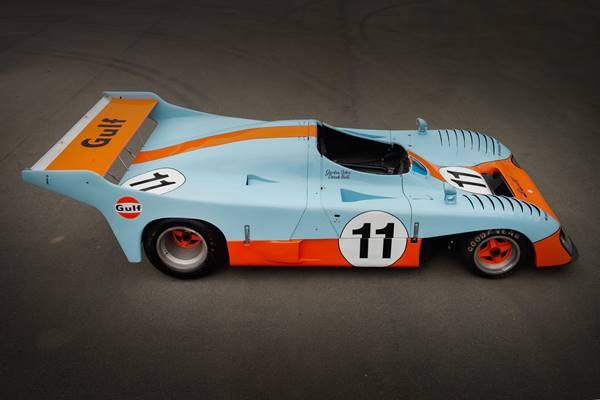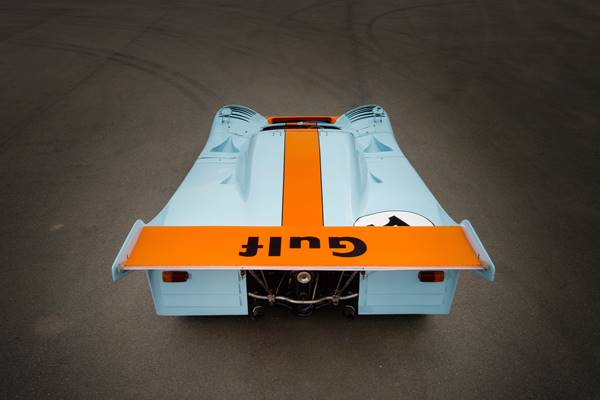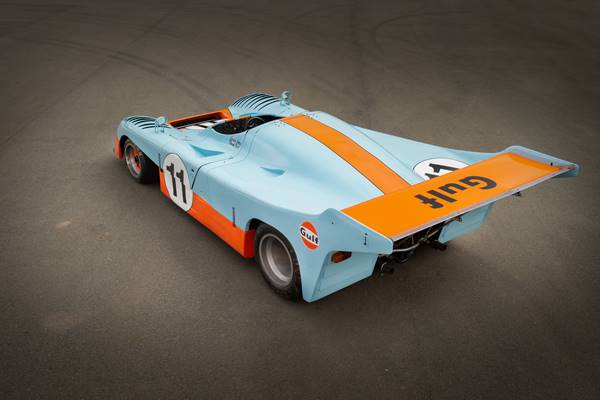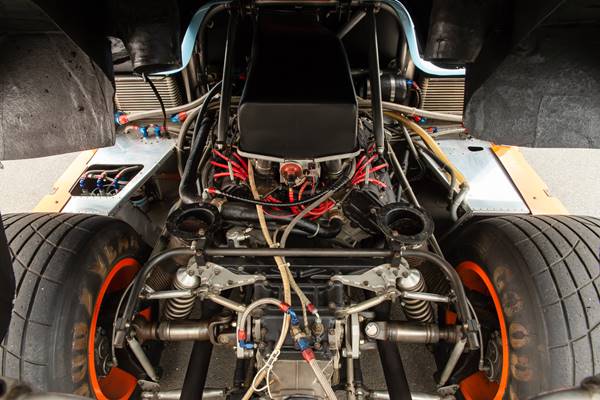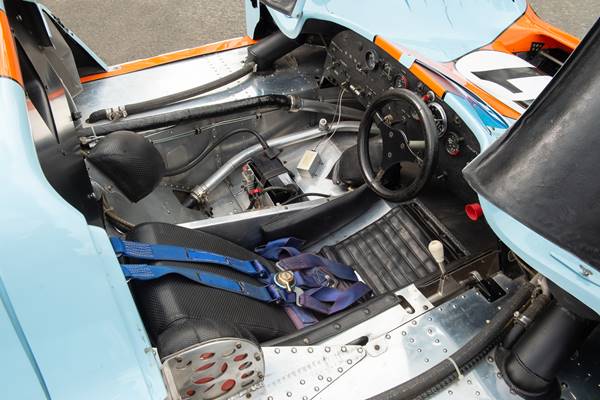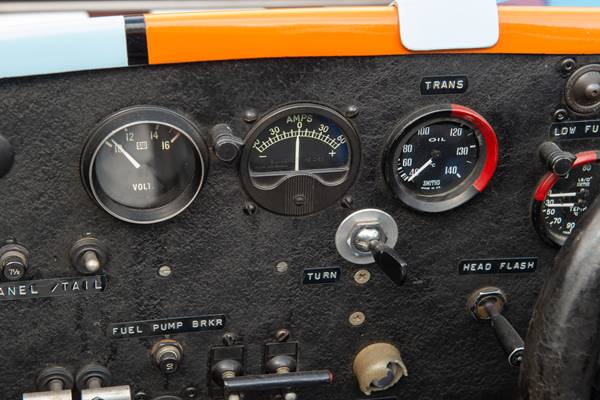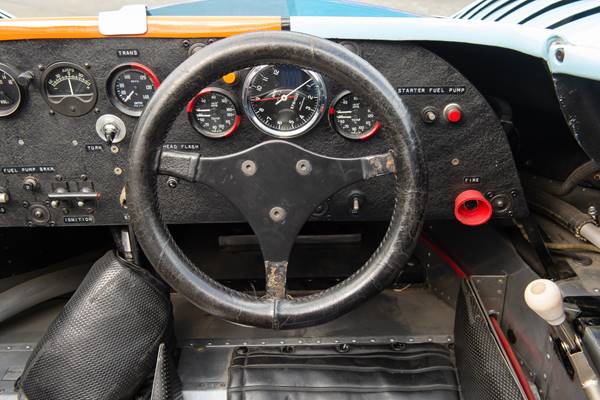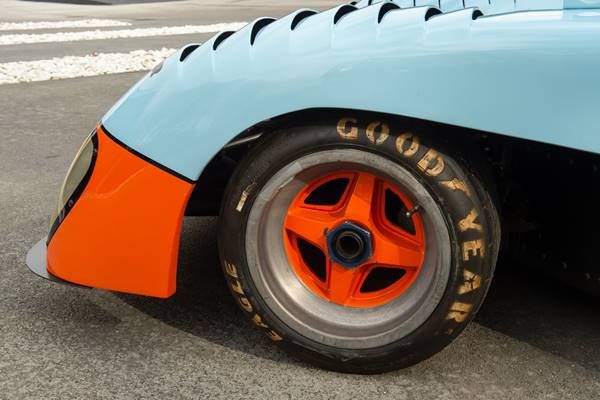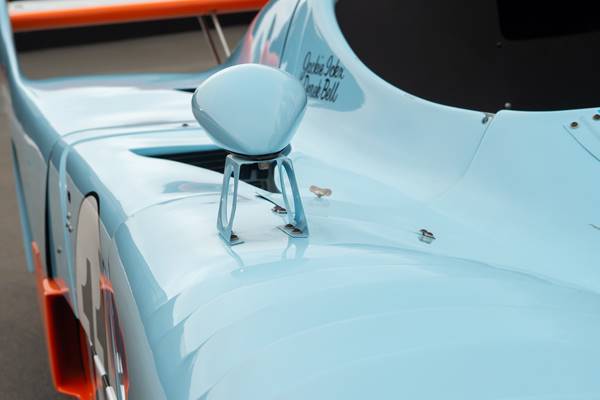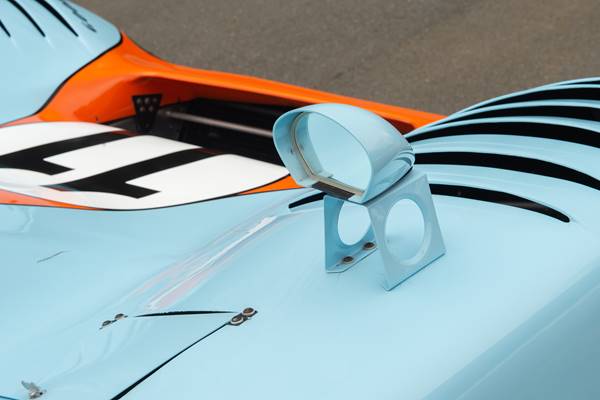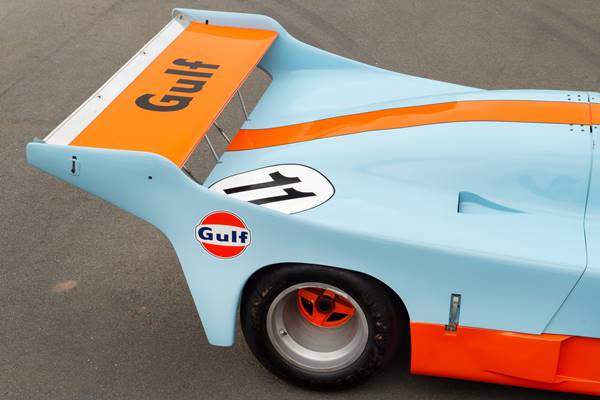At the end of the 1974 racing season, the Gulf Racing Research Company sold it pair of GR7 sports racing cars to Georg Loos and set about developing a pair of brand new ones for the coming year, the sole focus of which was to win Le Mans. With that circuit’s all-important Mulsanne straight in mind, the GR8 featured a wheelbase 6.1 inches longer than that of its predecessor. The first of the two Len Bailey-designed chassis - GR8/801 - had in fact been completed and tested five times before the end of the 1974 season, fitted with a specifically lengthened GR7 body. The first task was therefore to design a fresh more aerodynamic suit of clothes for the new model. The result was tested in the MIRA wind tunnel with dramatic results - a drag coefficient of 0.353 as opposed to the GR7’s 0.531. Things were going well and the second car - GR8/802 - was also completed and shaken down in plenty of time for the June races.
Powered by Ford’s ubiquitous DFV V8 engine, the sleek new blue and orange projectiles represented Gulf’s best opportunity of winning the 24 hour race since 1971; a result the team was even more eager to achieve than ever, as the season was due to mark the end of the its unparalleled nine year association with Gulf Oil, that had already resulted in three Le Mans and three World Championship victories. The GR8s did not disappoint, with the GR8/801 of Derek Bell and Jacky Ickx further adding to the team’s existing tally of outright victories, and the GR8/802 of Vern Schuppan and Jean-Pierre Jaussaud following home in a fine third place. The closing chapter of the $4 million Gulf association could hardly have ended on a higher note.
Despite the success, the GR8s initially failed to sell, but by March 1976 their title had been acquired by Harley Cluxton III of Phoenix Arizona who wasted no time in asking John Horsman to prepare and run them at Le Mans once more, this time under the banner of Harley’s Gran Touring Cars Inc. Concern, with sponsorship from JCB. The result was impressive with both cars finishing the race once again, this time with GR8/802 in second place in the hands of Francois Migault and Jean-Louis Lafosse and GR8/801 coming home fifth courtesy of Derek Bell and Verb Schuppan.
GR8/801 contested Le Mans three times more in various guises but was unable to echo its former glory and was ultimately returned to its race-winning Gulf livery before spending a number of years in the Blackhawk Museum. Le Mans winners are rightly prized above almost all other racing cars and Mirage GR8/801 has more than earned its place at the top table of motor racing history.
